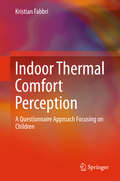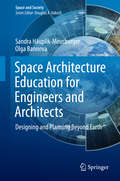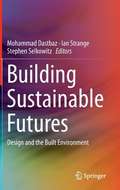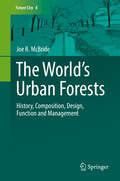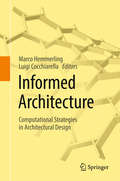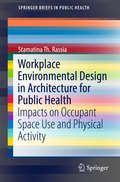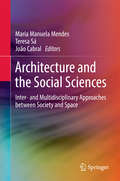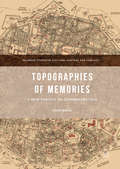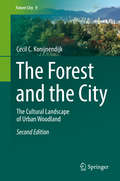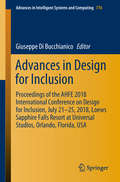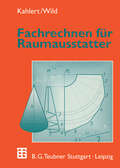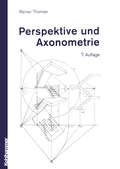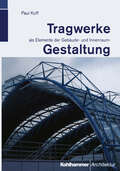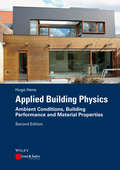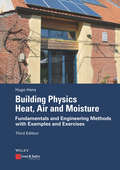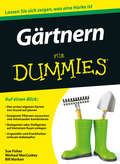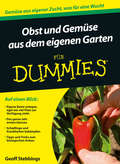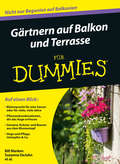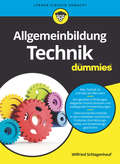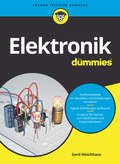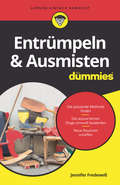- Table View
- List View
Indoor Thermal Comfort Perception: A Questionnaire Approach Focusing on Children (SpringerBriefs in Applied Sciences and Technology)
by Kristian FabbriProviding a methodology for evaluating indoor thermal comfort with a focus on children, this book presents an in-depth examination of children’s perceptions of comfort. Divided into two sections, it first presents a history of thermal comfort, the human body and environmental parameters, common thermal comfort indexes, and guidelines for creating questionnaires to assess children’s perceptions of indoor thermal comfort. It then describes their understanding of the concepts of comfort and energy, and the factors that influence that perception. In this context, it takes into account the psychological and pedagogical aspects of thermal comfort judgment, as well as architectural and environmental characteristics and equips readers with the knowledge needed to effectively investigate children’s perspectives on environmental ergonomics.The research field of indoor thermal comfort adopts, on the one hand, physical parameter measurements and comfort indexes (e.g. Predicted Mean Vote (PMV) or adaptive comfort), and on the other, an ergonomic assessment in the form of questionnaires. However the latter can offer only limited insights into the issue of comfort, as children often use different terms than adults to convey their experience of thermal comfort. The books aims to address this lack of understanding with regard to children’s perceptions of indoor thermal comfort.The book is intended for HVAC engineers and researchers, architects and researchers interested in thermal comfort and the built environment. It also provides a useful resource for environmental psychologists, medical and cognitive researchers.
Space Architecture Education for Engineers and Architects: Designing and Planning Beyond Earth (Space and Society)
by Sandra Häuplik-Meusburger Olga BannovaThis book considers two key educational tools for future generations of professionals with a space architecture background in the 21st century: (1) introducing the discipline of space architecture into the space system engineering curricula; and (2) developing space architecture as a distinct, complete training curriculum. Professionals educated this way will help shift focus from solely engineering-driven transportation systems and “sortie” missions towards permanent off-world human presence. The architectural training teaches young professionals to operate at all scales from the “overall picture” down to the smallest details, to provide directive intention–not just analysis–to design opportunities, to address the relationship between human behavior and the built environment, and to interact with many diverse fields and disciplines throughout the project lifecycle. This book will benefit individuals and organizations responsible for planning transportation and habitat systems in space, while also providing detailed information on work and design processes for architects and engineers.
Building Sustainable Futures: Design and the Built Environment (PDF)
by Mohammad Dastbaz Jon Price Ian Strange Stephen SelkowitzThis book presents state-of-the-art research and case studies on new approaches to the design, construction and planning of our cities. Emphasis is placed on the role of alternative and renewable energy in the development of urban infrastructures that enable sustainable futures. Reflecting the multi-faceted efforts required to successfully meet sustainability challenges, this book is a collaboration between practitioners and academics across a broad spectrum of specializations. Compelling research findings are explained in the context of practical implementation, enhanced by case studies from industry leaders in order to create a pragmatic reference across policy areas where environmentally aware decision making is required.
Building Sustainable Futures: Design and the Built Environment
by Mohammad Dastbaz Jon Price Ian Strange Stephen SelkowitzThis book presents state-of-the-art research and case studies on new approaches to the design, construction and planning of our cities. Emphasis is placed on the role of alternative and renewable energy in the development of urban infrastructures that enable sustainable futures. Reflecting the multi-faceted efforts required to successfully meet sustainability challenges, this book is a collaboration between practitioners and academics across a broad spectrum of specializations. Compelling research findings are explained in the context of practical implementation, enhanced by case studies from industry leaders in order to create a pragmatic reference across policy areas where environmentally aware decision making is required.
The World’s Urban Forests: History, Composition, Design, Function and Management (Future City #8)
by Joe R. McBrideThe purpose of this book is to examine urban forests in cities around the world. It will ask questions about the history, composition, structure, and management of trees in urban areas. Data for this book was collected in 33 cities across broad geographical areas known as biomes. Constraints and opportunities imposed on urban forest composition, design, and management by the ecological characteristics of these biomes will be examined. The book will also address the cultural and historical factors that influenced the characteristics of urban forests around the world.
Informed Architecture: Computational Strategies in Architectural Design
by Marco Hemmerling Luigi CocchiarellaThis book connects the different topics and professions involved in information technology approaches to architectural design, ranging from computer-aided design, building information modeling and programming to simulation, digital representation, augmented and virtual reality, digital fabrication and physical computation. The contributions include experts’ academic and practical experiences and findings in research and advanced applications, covering the fields of architecture, engineering, design and mathematics. What are the conditions, constraints and opportunities of this digital revolution for architecture? How do processes change and influence the result? What does it mean for the collaboration and roles of the partners involved. And last but not least: how does academia reflect and shape this development and what does the future hold? Following the sequence of architectural production - from design to fabrication and construction up to the operation of buildings - the book discusses the impact of computational methods and technologies and its consequences for the education of future architects and designers. It offers detailed insights into the processes involved and considers them in the context of our technical, historical, social and cultural environment. Intended mainly for academic researchers, the book is also of interest to master’s level students.
Workplace Environmental Design in Architecture for Public Health: Impacts on Occupant Space Use and Physical Activity (SpringerBriefs in Public Health)
by Stamatina Th. RassiaThis concise volume analyzes the potential for the workplace environment—where so many people spend so much of their day—to improve workers’ capacity for health and wellness. It pinpoints the link between sedentary lifestyles and poor health, and explores the role of office spatial design in encouraging physical activity to promote physical activity, health and prevent disease. The featured research study tracks workers’ movement in a variety of office layouts, addressing possible ways movement-friendly design can co-exist with wireless communication, paperless offices, and new corporate concepts of productivity. From these findings, the author’s conclusions extend public health concepts to recognize that influencing population-wide levels of activity through office architectural design alone may be possible. This SpringerBrief is comprised of chapters on : Physical activity and disease: Theory and practice Space-use and the history of the office building Identifying factors of the office architectural design that influence movement, Interdisciplinary research methods in studying worker physical activity, decision-making and office design characteristics The KINESIS model for simulating physical activity in office environmentsThe questions and potential for solutions in Workplace Environmental Design in Architecture for Public Health will interest and inform researchers in interdisciplinary topics of public health and architecture as well as graduate and post-graduate students, architects, economists, managers, businesses as well as health-conscious readers.
Architecture and the Social Sciences: Inter- and Multidisciplinary Approaches between Society and Space
by Maria Manuela Mendes Teresa Sá João CabralThis book contributes to current debates on the relationship between architecture and the social sciences, highlighting current interdisciplinary and transdisciplinary teaching as well as research and practice in architecture and urbanism. It also raises awareness about the complementarities and tensions between the spaces of the project, including the construction spaces and living space. It gives voice to recent projects and socio-territorial interventions, focusing on interdisciplinary and multidisciplinary approaches between society and space. Divided into two parts, the first part discusses the possible dialogue between social sciences and architecture, while the second part explores architecture, politics and social change in urban territories from a European perspective.
Topographies of Memories: A New Poetics of Commemoration
by Anita BakshiThis book explores new approaches towards developing memorial and heritage sites, moving beyond the critique of existing practices that have been the traditional focus of studies of commemoration. Offering understandings of the effects of conflict on memories of place, as manifested in everyday lives and official histories, it explores the formation of urban identities and constructed images of the city. Topographies of Memories suggests interdisciplinary approaches for creating commemorative sites with shared stakes. The first part of the book focuses on memory dynamics, the second on Nicosia, the divided capital of Cyprus, and the third on physical and material world interventions. Design practices and modes of engagement with places of memory are explored, making connections between theoretical explorations of memory and forgetting and practical strategies for designers and practitioners.
Topographies of Memories: A New Poetics of Commemoration
by Anita BakshiThis book explores new approaches towards developing memorial and heritage sites, moving beyond the critique of existing practices that have been the traditional focus of studies of commemoration. Offering understandings of the effects of conflict on memories of place, as manifested in everyday lives and official histories, it explores the formation of urban identities and constructed images of the city. Topographies of Memories suggests interdisciplinary approaches for creating commemorative sites with shared stakes. The first part of the book focuses on memory dynamics, the second on Nicosia, the divided capital of Cyprus, and the third on physical and material world interventions. Design practices and modes of engagement with places of memory are explored, making connections between theoretical explorations of memory and forgetting and practical strategies for designers and practitioners.
The Forest and the City: The Cultural Landscape of Urban Woodland (Future City #9)
by Cecil C. KonijnendijkAmsterdamse Bos, Bois de Boulognes, Epping Forest, Hong Kong’s country parks, Stanley Park: throughout history cities across the world have developed close relationships with nearby woodland areas. In some cases, cities have even developed – and in some cases are promoting – a distinct ‘forest identity’. This book introduces the rich heritage of these city forests as cultural landscapes, and shows that cities and forests can be mutually beneficial.Essential reading for students and researchers interested in urban sustainability and urban forestry, this book also has much wider appeal. For with city forests playing an increasingly important role in local government sustainability programs, it provides an important reference for those involved in urban planning and decision making, public affairs and administration, and even public health. From providers of livelihoods to healthy recreational environments, and from places of inspiration and learning to a source of conflict, the book presents examples of city forests from around the world. These cases clearly illustrate how the social and cultural development of towns and forests has often gone hand in hand. They also reveal how better understanding of city forests as distinct cultural and social phenomena can help to strengthen synergies both between cities and forests, and between urban society and nature.
Advances in Design for Inclusion: Proceedings of the AHFE 2018 International Conference on Design for Inclusion, July 21-25, 2018, Loews Sapphire Falls Resort at Universal Studios, Orlando, Florida, USA (Advances in Intelligent Systems and Computing #776)
by Giuseppe Di BucchianicoThis book addresses a range of topics in design, such as universal design, design for all, digital inclusion, universal usability, and accessibility of technologies for people regardless of their age, financial situation, education, geographic location, culture and language. It especially focuses on accessibility for people with auditory, cognitive, neurological, and visual impairments, ageing populations, and mobility for those with special physical needs. The book explores some of the overlaps between inclusive design and web accessibility to help managers, designers, developers, policy makers, and researchers optimize their efforts in these areas. Based on the AHFE 2018 International Conference on Design for Inclusion, held on July 21–25, 2018, in Orlando, Florida, USA, it discusses new design technologies and highlights the disparate needs of the individuals within a community. Thanks to its multidisciplinary approach, it is a valuable resource for readers from various backgrounds, providing them a timely, practice-oriented guide to design for inclusion.
Fachrechnen für Raumausstatter
by Horst Kahlert Michael WildDas Buch ist vor allem für Berufs- und Berufsfachschüler geschrieben, jedoch auch zur Vorbereitung für die Meisterprüfung gedacht. Einen vereinfachten, übersichtlicheren Aufbau hat das Werk dadurch erfahren, dass auf der linken Buchseite stets die Theorie mit Beispielaufgaben und auf der rechten Seite eine Fülle von Aufgaben zu finden sind. Die Inhalte sind an neue Normen und Verarbeitungsvorschriften angepasst. Übungen zum Umgang mit dem Taschenrechner sind neu aufgenommen und am Ende des Buches ist eine Formelsammlung angehängt.
Perspektive und Axonometrie
by Reiner ThomaeNoch immer ist die Kenntnis und die Lehre von der Perspektive für die räumliche Darstellung geplanter Objekte unentbehrlich. Dies wird sich trotz Fotografie und Computer-Aided-Design (CAD) nicht ändern. Das Buch erklärt das Wesentliche zur Perspektive anhand leicht verständlicher Beispiele, wobei die Zeichnung im Mittelpunkt steht, ergänzt um knappe Erläuterungen. Diese Perspektivlehre ist vor allem für diejenigen gedacht, die sich mit der Planung neuer Objekte befassen - für Architekten und Designer, aber auch für den interessierten Laien. Vorkenntnisse sind nicht erforderlich.
Tragwerke: als Elemente der Gebäude- und Innenraumgestaltung
by Paul KuffTragwerke sind unverzichtbar für jedes Gebäude. Tragwerke sind aber auch in ihren verschiedenartigen Ausformungen Gestaltungselemente für Gebäude und Innenräume. In diesem Buch werden konstruktiv-gestalterische Entscheidungen verknüpft mit elementaren Kenntnissen des Tragverhaltens. In einer übersichtlich strukturierten Systematik werden die Grundtypen von Tragsystemen entwickelt und ihre spezifischen Gestaltungsformen dargestellt. Alle Kraftflüsse in Tragsystemen sowie deren Beanspruchungen und Dimensionierungen werden grundsätzlich auf den Gleichgewichtsbedingungen aufgebaut. Für komplexe Tragverhalten werden angemessene Vereinfachungen entwickelt.
Applied Building Physics: Ambient Conditions, Building Performance and Material Properties
by Hugo S. HensBad experiences with construction quality, the energy crises of 1973 and 1979,complaints about `sick buildings?, thermal, acoustical, visual and olfactory discomfort, the need for good air quality, the move towards more sustainability ? all these have accelerated the development of a field that, for a long time, was hardly more than an academic exercise: building physics. The discipline embraces domains such as heat and mass transfer, building acoustics, lighting, indoor environmental quality and energy efficiency. In some countries, fire safety is also included. Through the application of physical knowledge and its combination with information coming from other disciplines, the field helps to understand the physical phenomena governing building parts, building envelope, whole building and built environment performance, although for the last the wording `urban physics? is used. Building physics has a real impact on performance-based building design. This volume on `Applied Building Physics? discusses the heat, air and moisture performance metrics that affect building design, construction and retrofitting.
Applied Building Physics: Ambient Conditions, Building Performance and Material Properties
by Hugo S. HensBad experiences with construction quality, the energy crises of 1973 and 1979,complaints about `sick buildings?, thermal, acoustical, visual and olfactory discomfort, the need for good air quality, the move towards more sustainability ? all these have accelerated the development of a field that, for a long time, was hardly more than an academic exercise: building physics. The discipline embraces domains such as heat and mass transfer, building acoustics, lighting, indoor environmental quality and energy efficiency. In some countries, fire safety is also included. Through the application of physical knowledge and its combination with information coming from other disciplines, the field helps to understand the physical phenomena governing building parts, building envelope, whole building and built environment performance, although for the last the wording `urban physics? is used. Building physics has a real impact on performance-based building design. This volume on `Applied Building Physics? discusses the heat, air and moisture performance metrics that affect building design, construction and retrofitting.
Building Physics - Heat, Air and Moisture: Fundamentals and Engineering Methods with Examples and Exercises
by Hugo S. HensBad experiences with construction quality, the energy crises of 1973 and 1979, complaints about "sick buildings", thermal, acoustical, visual and olfactory discomfort, the need for good air quality, the move towards more sustainability - all these have accelerated the development of a field that, for a long time, was hardly more than an academic exercise: building physics (in English speaking countries sometimes referred to as building science). The discipline embraces domains such as heat and mass transfer, building acoustics, lighting, indoor environmental quality and energy efficiency. In some countries, fire safety is also included. Through the application of physical knowledge and its combination with information coming from other disciplines, the field helps to understand the physical phenomena governing building parts, building envelope, whole buildings and built environment performance, although for the last the wording "urban physics" is used. Today, building physics has become a key player on the road to a performance based building design. The book deals with the description, analysis and modeling of heat, air and moisture transport in building assemblies and whole buildings with main emphasis on the building engineering applications, including examples. The physical transport processes determine the performance of the building envelope and may influence the serviceability of the structure and the whole building. Compared to the second edition, in this third edition the text has partially been revised and extended.
Building Physics - Heat, Air and Moisture: Fundamentals and Engineering Methods with Examples and Exercises
by Hugo S. HensBad experiences with construction quality, the energy crises of 1973 and 1979, complaints about "sick buildings", thermal, acoustical, visual and olfactory discomfort, the need for good air quality, the move towards more sustainability - all these have accelerated the development of a field that, for a long time, was hardly more than an academic exercise: building physics (in English speaking countries sometimes referred to as building science). The discipline embraces domains such as heat and mass transfer, building acoustics, lighting, indoor environmental quality and energy efficiency. In some countries, fire safety is also included. Through the application of physical knowledge and its combination with information coming from other disciplines, the field helps to understand the physical phenomena governing building parts, building envelope, whole buildings and built environment performance, although for the last the wording "urban physics" is used. Today, building physics has become a key player on the road to a performance based building design. The book deals with the description, analysis and modeling of heat, air and moisture transport in building assemblies and whole buildings with main emphasis on the building engineering applications, including examples. The physical transport processes determine the performance of the building envelope and may influence the serviceability of the structure and the whole building. Compared to the second edition, in this third edition the text has partially been revised and extended.
Gärtnern für Dummies (Für Dummies)
by Sue Fisher Michael MacCaskey Bill MarkenWenn Sie nicht nur Ihrem grünen Daumen vertrauen wollen Haben Sie ein Stück Erde, das Sie in einen Garten verwandeln möchten, aber außer der Freude an erdverschmierten Händen, sattem Grün und Farbenpracht noch recht wenig Ahnung von Gartenarbeit? Dann ist Gärtnern für Dummies das richtige Buch für Sie! Hier erhalten Sie konkrete Hilfestellung bei der Planung Ihres Gartens und der Wahl der für Sie und Ihr Stück Land passenden Pflanzen. Lernen Sie, wie Sie aus Bäumen, Büschen und Blumen ein harmonisches Ganzes schaffen und mit einjährigen und mehrjährigen Pflanzen Ihren Garten zum Blühen bringen. Außerdem enthält das Buch viele nützliche Tipps zum richtigen Gartengerät, zur Hege und Pflege der Pflanzen, zur Schädlingsbekämpfung und zum Kompostieren.
Obst und Gemüse aus dem eigenen Garten für Dummies (Für Dummies)
by Geoff StebbingsFrisches Obst und Gemüse aus dem eigenen Garten Mal eben in den Garten gehen und ein paar Beeren naschen, die selbst angebauten Bohnen ernten oder Zwetschgenkuchen mit Früchten vom eigenen Baum backen − gefällt Ihnen die Vorstellung? Dieses praktische Handbuch gibt Ihnen zahlreiche Tipps und Tricks, wie Sie das ganze Jahr lang leckeres, ernte - frisches Obst und Gemüse aus dem eigenen Garten genießen können: von der Wahl des Werkzeugs über die Auswahl der Pflanzen und Tipps zum biologischen Anbau bis zur ersten Ernte. Geoff Stebbings gibt Ihnen nützliche Ratschläge an die Hand, damit Sie sofort mit der eigenen Gartenarbeit beginnen können und in kurzer Zeit ein erfolgreicher Hobbygärtner werden.
Gärtnern auf Balkon und Terrasse für Dummies (Für Dummies)
by Bill Marken Suzanne DeJohnWer keinen Garten besitzt, muss nicht auf's Gärtnern verzichten. Auch auf Balkon oder Terrasse lässt sich in Töpfen und Kübeln ein kleiner, aber feiner Garten anlegen. Dieses Buch zeigt Ihnen, wie Sie die richtigen Pflanzen auswählen, sie hegen und pflegen und geschickt miteinander kombinieren, sodass sich ein harmonisches Ganzes ergibt. Es macht Vorschläge für Blumenarrangements für eine Saison oder auch eine Bepflanzung, an der Sie viele Jahre Freude haben, ohne viel Arbeit investieren zu müssen.
Allgemeinbildung Technik für Dummies (Für Dummies)
by Wilfried SchlagenhaufOb Smartphone, Auto oder Kühlschrank - unser Alltag spielt sich in einer technisch geprägten Welt ab. In diesem Buch begleitet Wilfried Schlagenhauf Sie durch die faszinierende Welt der technischen Kultur. Nach der Lektüre dieses Buches werden Sie über manches technische Phänomen besser Bescheid wissen, die zugrundeliegenden Konstruktions- und Funktionsprinzipien kennen und technische Lösungen als clevere Antworten auf menschliche Bedürfnisse verstehen. Und es wird Ihnen leichter fallen, technische Produkte auszuwählen, zu bewerten und Kaufentscheidungen zu treffen. Spezielles Vorwissen naturwissenschaftlicher oder mathematischer Art brauchen Sie dazu nicht, versprochen! Lassen Sie sich technik-begeistern!
Elektronik für Dummies (Für Dummies)
by Gerd WeichhausSuchen Sie einen einfachen Einstieg in die Elektronik? Dann sind Sie hier richtig. In diesem Buch werden zunächst die wichtigsten Utensilien und Werkzeuge aufgeführt, die Sie zur Ausübung Ihres neuen Hobbys brauchen. Nebenher erfahren Sie gleich am Anfang, welche Funktionen die verschiedenen elektronischen Bauteile haben und wie Sie sie beim Basteln und Experimentieren einsetzen. Von der Theorie wird nur das Nötigste vermittelt. Schnell geht es an die Praxis: Schritt für Schritt bauen Sie einfache elektronische Schaltungen auf, deren Komplexität im Verlaufe des Buches zunimmt. Und am Schluss kommt die Kür: Bauen Sie eine Zeitschaltung, ein Lauflicht oder eine Sprechanlage! Lehnen Sie sich zufrieden zurück und betrachten Sie Ihr Werk! Und genießen Sie Ihren Wissenszuwachs!
Entrümpeln und Ausmisten für Dummies (Für Dummies)
by Jennifer FredewessWir alle kennen das - hier eine Kleinigkeit als mögliches Mitbringsel eingekauft, dort das günstige Sonderangebot für einen neuen Küchenhelfer mitgenommen und an den preisreduzierten Schuhen vorbeizugehen, hat auch nicht geklappt. Und schon häufen sich Dinge an, die man nicht unbedingt braucht und die zu Gerümpel werden. Jennifer Fredeweß schärft Ihren Blick für die Dinge um Sie herum, die Sie nicht mehr benötigen. Und dann heißt es ausmisten. Die Autorin zeigt die Vor- und Nachteile beim Ausmisten mit Freunden, der Familie, einem Aufräumcoach oder eine Facebook-Gruppe und gibt Tipps, wie Sie planvoll ausmisten, ohne schlechtes Gewissen, sich von Geschenk oder einem einmal liebgewonnenen Gegenstand zu trennen. Sie erfahren, welche Methode am besten zu Ihnen passt, wie Sie Raum für Raum Ihre Wohnung ausmisten und wie Sie die aussortierten Dinge loswerden. Und auf einmal fällt es ganz leicht Entscheidungen zu treffen und sich von überflüssigen Dingen zu trennen.
